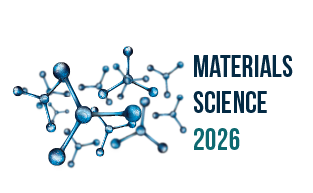3rd Global Event on
Materials Science and Engineering
October 29-30, 2026 | Berlin, Germany

Materials Science 2026

Bahrain Polytechnic, Bahrain
Abstract:
Since Li-ion batteries have been commercialized in 1991 by a Sony and Asahi Kasei team, they have found a wide range of applications in industry and everyday life. The demand on lithium is increasing. Due to limited supply, researchers are moving to battery technologies that do not require lithium (i.e., beyond lithium-ion battery technologies). Future goals for Beyond Li-ion batteries (BLIs: Na+, K+, Mg2+, Zn2+, Al3+, etc.) research have to include high-density and low cost, safety, nontoxicity, high density packing with thin films, large cycle durability with high temperature, light weight and smaller volume. In addition to their lower price, these ions have other advantages. Larger monovalent ions (Na+ and K+) require lower desolation energy than the smaller Li+ ion, thus improving the kinetics of the ion insertion process at the electrode/electrolyte interface, which is important for high power. In addition, unlike lithium, sodium does not form an alloy with aluminum. Therefore, heavy and expensive copper current collectors can be replaced with aluminum for anodes in Na-ion batteries. High energy density can be achieved by combining multivalent ions (Mg+2 and Al+3), which is effective in small device battery performance. However, beyond Li ions are either larger in size than Li, or carry a higher charge; which limits their diffusion in the crystal lattice of electrode materials. Because they operate at lower voltages than Li-ion batteries, higher capacity cathode materials are necessary to increase the energy storage of Na-ion batteries as well as Mg-ion batteries. Larger beyond Li-ions e.g., Potassium ions, shuttle back and forth through the electrolytes to the electrodes. The cathode principally restricts the energy density of potassium-ion batteries. However, magnetic field applied to the magnetically active electrodes may speed up charging and increase battery performance. In this paper; transition metals, typically Mn, Fe, Co, and/or Ni, allow for the cathodes to make use of their magnetic properties. Candidate electrode materials doped with magnetic elements are proposed and analyzed to make use of their magnetic properties.
Biography:
Abbas Alshehabi has completed his PhD in Materials Science & Engineering in 2012 from Kyoto University. He worked as a research engineer for several corporations in Japan before he joined the National Institute of Technology (NIT)- Japan, and then Bahrain Polytechnic-Bahrain as an assistant professor. Worked on grazing X-ray analysis, including total reflection X-ray spectroscopy (TRXPS) which, for the first time, investigated chemical properties of hard disk top layer fluorocarbon by TRXPS. Conducted XPS plasmon intrinsic and extrinsic analysis beside angle resolved XPS. Worked on SEM-EDX and XRR (X-ray reflectivity) and Energy materials where he published research in Q1 journals.
